|

 Up
Up 
 A Long Twilight
A Long Twilight

(You are here.)
 Down
Down

Restored

Personal Spaces 
Back in Business

NACA

Old Flames 
A Safer Gentler
Airplane

All in Good Fun

Exiled 
Streamlining

Monumental
Achievements

Mission
Impassable 
The Edison Institute

Cipher

At Peace 
The Last
Airplane




  Need
to Need
to
find your
bearings?
Try
these
navigation aids:
If
this is your first
visit, please stop by:
Something
to share?
Please:



|
|
 rville
Wright’s life changed dramatically in 1914. The year had started on
a high note. On 13 January 1914, the United States Court of Appeals,
Second Circuit judged the Curtiss Aeroplane and Motor Company to
have infringed on Patent No. 821,393 – the Wright brothers’ 1906
patent on an aircraft control system. At the same time, Chief Judge
Learned Hand upheld a previous decision by Judge John R. Hazel,
declaring the patent was entitled to “liberal interpretation” and
designating it as the grandfather or “pioneer” patent of the
aviation industry. This had happened only a handful of times in the
past, most notably when Alexander Graham Bell had his telephone patent
adjudicated to be the pioneer patent of the telecommunications
industry. rville
Wright’s life changed dramatically in 1914. The year had started on
a high note. On 13 January 1914, the United States Court of Appeals,
Second Circuit judged the Curtiss Aeroplane and Motor Company to
have infringed on Patent No. 821,393 – the Wright brothers’ 1906
patent on an aircraft control system. At the same time, Chief Judge
Learned Hand upheld a previous decision by Judge John R. Hazel,
declaring the patent was entitled to “liberal interpretation” and
designating it as the grandfather or “pioneer” patent of the
aviation industry. This had happened only a handful of times in the
past, most notably when Alexander Graham Bell had his telephone patent
adjudicated to be the pioneer patent of the telecommunications
industry.
But the victory was fleeting. Glenn Curtiss
responded by convincing the Smithsonian Institution to let him
borrow the remains of the 1903 Langley Aerodrome A and try to
fly it. The Smithsonian, for its part was also anxious to see
Langley's airplane fly;
the failure of the 1903 test flights had haunted the Smithsonian and
diminished it politically. Beginning in May, Curtiss made a series of brief
hop-flights in
a much-modified and improved Aerodrome. In its annual report,
the Smithsonian ignored the modifications and claimed, “…former
Secretary Langely had succeeded in building the first aeroplane
capable of sustained free flight with a man.” The Curtiss lawyers
prepared to argue that since the Aerodrome A was flightworthy
and could have flown before the Wright Flyer, the Wright brothers’ work was not the foundation of
aviation. The Smithsonian claimed Samuel Langley was vindicated and
displayed the rebuilt Aerodrome A as the “the
first man-carrying aeroplane in the history of the world capable of
sustained free flight,” essentially rewriting aviation
history.
Orville was outraged and determined to protect
his and his deceased brother’s reputation. He sold his company,
ridding himself of the day-to-day responsibilities of management,
and launched himself into a battle to convince the Smithsonian to admit
that (1) Curtiss had made dozens of modifications to the Great
Aerodrome, (2) without these modifications, the Aerodrome
was incapable of flight, and (3) the 1903 Wright Flyer was
the first to make a “sustained, controlled, powered flight” with a
man aboard..
At the same time, he continued to contribute to
aviation and several other industries. Most biographies portray him
as a “tinkerer” during this period, recalling family stories of his
attempts to invent a record changer or his contrived “railroad” that
ferried groceries to his vacation home on Lambert Island. Nothing
could be further from the truth. A little over a year after he sold
the Wright Company, he joined another venture in which he
participated in the design of the first guided missile and
participated in the development of the legendary Liberty
engine. He designed a record-setting cabin biplane, the OW-1. He was a lifelong member of the board of directors of NACA
(later NASA), and also served on the board of the Guggenheim Fund,
helping to develop instrument flying and improving flight safety. He
worked on aerodynamic bodies for automobiles, the electromechanical
works of what would become the first computers, even designed toys and
improved means of toy manufacture. Perhaps the reason that history
overlooks these accomplishments is the Orville thoroughly enjoyed
being part of a team, just as he had once teamed with Wilbur. And
more often than not his shy nature kept him in the background letting others enjoy
the spotlight.
Besides, none of these endeavors, however
exciting or important, warranted his complete and enduring focus –
none except his private war with the Smithsonian.
Timeline:
-
1916 – For the first time since
1903, Orville opens the boxes containing the parts of 1903
Flyer. He restores the aircraft for its first public showing at
the Massachusetts Institute of Technology. He will show it
several more times at special events over the next decade. This
relic will become his most potent weapon in his struggle with
the Smithsonian.
-
1916 on – Since his family moved to
Hawthorne Hill in 1913, Orville had taken on the care of the
mansion and adapted it to be his machine for living. Now he
built two more personal spaces. Leaving his offices at the
Wright Company, he built a small personal office and laboratory
at 15 North Broadway in Dayton, Ohio, just a few blocks from his
former home. That same year during a vacation in Canada, Orville
purchased Lambert Island in Lake Huron to be his summer home,
and immediately began rearranging and rebuilding the structures
on the island to suit himself. Both Hawthorne Hill and Lambert
Island took on a new importance to the Wright family when Bishop
Milton Wright died in 1917 and Orville became its new patriarch.
-
1917 to 1923 – Orville lends his
name to the newly incorporated Dayton Wright Aeroplane Company
(later Dayton Wright Aeronautical Corporation). He also accepts
a position as consulting engineer. In this capacity, he
participates in the development of aircraft engines, a guided
missile, a cabin biplane, wing shapes, retractable landing gear, and many other
improvements in aircraft design. Additionally, he frequently
consults at McCook Field in Dayton, Ohio where the Army Air
Corps has set up its central research and design facility.
-
1920 – The National Advisory Council
on Aeronautics (NACA) had begun quietly in 1915 at the prompting
of the Smithsonian and other scientific institutions. It’s original purpose was to help direct and
coordinate the aeronautical research and manufacturing programs
in the United States, but its mission quickly grew to include
research in advance aviation technology. In 1917, NACA built its
first research laboratory near Norfolk, Virginia. By 1920, it
employed over 100 scientists and President Woodrow Wilson
appointed Orville to its board of directors. Orville would serve for
28 years, until his death.
-
1922 to 1929 -- Katharine Wright
begins to correspond with an old friend from Oberlin College,
Henry J. Haskell, now editor and part owner of the Kansas
City Star newspaper. In 1924, Katharine is appointed to the
board of directors of Oberlin College along with Haskell and the
two begin to see more of each other. In 1926, she announces her
engagement to Henry. Orville is distraught, convinced she has
violated a pact between them. He refuses to attend her wedding
on 20 November 1926, and then ignores Katharine and her new
husband when the couple moves to Kansas City. Two years after her wedding, Katharine
contracts pneumonia. Orville’s brother Lorin convinces Orville
to see her. He arrives at her bedside just before her death on 3
March 1929.
-
1923 to 1930 – At the request of his
niece Ivonette, Orville designs Flips and Flops, a toy
catapult that launches a miniature clown. If launched just
right, the clown catches a trapeze and whirls around. The toy is
manufactured by the Miami Wood Specialty Company, in which
Ivonette’s husband has invested. Later on, when brother Lorin (Ivonette’s
father) buys into the company, Orville designs a printing press
that will print on balsa wood, adding color and graphics to toy
airplanes.
-
1925 to 1930 -- Orville joins the
board of directors at the Daniel Guggenheim Fund for the
Promotion of Aeronautics. The Guggenheims were concerned that the United States was falling behind in aviation
and organized the fund to bring it up to speed. They helped
establish new aeronautical engineering programs at universities,
and sponsored programs to develop aerial navigation,
instrument flying, and flight safety. The fund disbanded in 1930
having accomplished its purpose, but the Guggenheim foundation
continued to sponsor advanced research in aeronautics and
established the Guggenheim Medal for exceptional contributions
to aviation. The first medal, award in 1930, went to Orville
Wright.
-
1925 to 1928 – After several
reports and articles appear supporting the Smithsonian’s position
that the Langley Aerodrome was the first aircraft “capable” of
flight; Orville Wright announces that he will send the 1903
Wright Flyer to the Science Museum in Kensington, England.
Here he says the curators will give his deceased brother Wilbur
and himself the credit they deserve as the inventors of the
airplane. The decision causes uproar in press. Smithsonian
Secretary Charles Abbot issues paper that partially recants the
Smithsonian’s position. Abbot also reduces the label on the
Aerodrome A display to read simply, “The Original Langley
Flying Machine of 1903, restored.” It is not enough for Orville;
he wants the Smithsonian to address the 1914 Aerodrome
test-flights and admit that these did not prove the Aerodrome
could have flown in 1903.
Abbot balks and Orville sends the Flyer off to Kensington in 1928.
-
1927 to 1934 – Carl Beer, chief
engineer of the Chrysler Company, engages Orville Wright to help
design and oversee wind tunnel tests to create an aerodynamic
automobile. The result, introduced in 1934, is the DeSoto
Airflow, which eventually breaks 32 stock car records, including
the fastest mile at 86.2 mph.
-
1926 to 1940 – The first monument
erected to the Wright brothers was a simple granite obelisk
commissioned by their old “banker” friend Captain William Tate
and placed in his front yard in Kitty Hawk, North Carolina.
Dedicated in 1927, it marked the spot where Wilbur had built the
1900 glider and where, Tate insisted, the Age of Aviation began.
This was followed in 1932 by a mammoth granite shaft carved with
Art Deco wings atop the “Big Hill” at Kill Devil Hills.
Conceived by North Carolina congressman Lindsay Warren and U.S.
Senator Hiram Bingham of Connecticut, its
purpose – besides commemorating the Wright brothers – was to
attract tourists to the Outer Banks. And it did. Dayton, Ohio
finally got its own monument in 1940, yet another granite shaft
on a ridge overlooking Huffman Prairie.
-
1933 to 1937 – At the suggestion of
Secretary Charles Abbot, Charles Lindbergh heads an attempt to
reconcile the differences between the Smithsonian and Orville
Wright. All three men meet and Orville makes his case very clear:
Admit that the 1903 Langley Aerodrome had been
extensively modified before its 1914 test flights and retract
the report that declared the Aerodrome was the first
airplane capable of flight. Abbot makes two counterproposals,
first that the issue be decided by a committee of government
officials; and then, when Orville rejects this, that the
Smithsonian prepare a paper
describing a complete history of the controversy, including
Langley’s work in aeronautics, the history of the Aerodrome, the
Smithsonian's 1914 report, Orville’s list of changes, the
Smithsonian’s notes on Orville’s list, and all that had happened
since 1914. Orville objects; this is too complex; it obscures
the heart of the controversy. Abbott objects to publishing
Orville’s list without context. Lindbergh eventually gives up.
In
preparing his will, Orville states that unless the will was amended
by a letter from him, the 1903 Flyer should remain in
England.
-
1936 to 1938 – Edward Scripps,
president of an influential organization of pioneer aviators
known as the Early Birds, approaches Orville about moving the
Webbert Building – once the Wright Cycle Shop – to Dearborn,
Michigan where Henry Ford is building an educational facility
and museum to honor American inventors. It’s called the Edison
Institute and will later be known as Greenfield Village. Orville
views this as a positive development in his ongoing feud with
the Smithsonian. His old shop will be enshrined in a major
American museum as the place where he and his brother invented
the airplane. Orville agrees with the caveat that the Early
Birds agree to recognize Orville and Wilbur Wright as the first
to fly and support Orville’s claim against the Smithsonian. When
Henry Ford comes to Dayton to arrange the transport of the bike
shop, he discovers the old Wright home at 7 Hawthorne Street is
available and buys it as well. The shop and home are moved to
Michigan and opened to the public in 1938.
-
1942 to 1945 – Beginning in 1926,
the German Navy depended on the Enigma cipher machine to code
and decode sensitive communications. This machine featured a
series of rotors that could be set in thousands of different
combination to create a new code each time it was used. The
British “Ultra” team cracked the code with primitive computers
in 1940, but the Germans added more rotors and once again made
the code undecipherable. In 1942, the National Cash Register Company,
under the direction of Joseph Desch, built a 7-foot-high,
11-foot-long, 5000-pound electromechanical computer called a
“bombe” that cracked the German code once and for all.
Orville Wright was among the many Dayton scientists who
contributed to this secret program. His focus seems to have been
the development of a better code machine for the Allied Forces.
-
1939 to 1948 – Fred C. Kelly, while
writing a biography of the Wright brothers, contacts Smithsonian
Secretary Charles Abbott and volunteers to take one more crack
at resolving the feud. Kelly learns from Orville just what is
needed for reconciliation – a list of the differences between
the 1903 and 1914 versions of the Aerodrome and an admission
that the 1914 report on the test flights was inaccurate. Kelly guides Abbott’s hand in
writing this resolution, Orville accepts it, and both
Orville and Abbott agree to announce the resolution in the 1942
Smithsonian Annual Report (due to be published in the summer of
1943). However, President Franklin D. Roosevelt asks to be
allowed to make the announcement during a special dinner at the
White House on December 17, 193 -- the fortieth anniversary of
the first flight at Kitty Hawk. Just before the dinner, Orville
writes to the
curators of the Kensington Science Museum and asks for
the return of the Flyer. Unfortunately, there is a war
on and the Flyer was stored in a British quarry for safekeeping.
The Science Museum also asks for time to build an exact copy of
the Flyer after the war is over, and Orville agrees. The Flyer
is not returned until 1948, the year Orville
dies.
-
1946 to 1950 – Dayton industrialist
Edward Deeds determines to build a historical park in Dayton and
asks Orville to contribute an airplane. Orville suggests the 1905
Wright Flyer III, which he and his brother Wilbur had
considered the world’s first practical airplane. The Flyer III
had been abandoned in Kitty Hawk in 1908, but it was salvaged in
1911. Orville acquired the remaining pieces and worked with
Harvey Geyer (a
former employee of the Wright Company) and Louis P. Christman
(an employee of National Cash Register) to restore
it. Orville did not live to see the Flyer III restored –
he died of a heart attack on 30 January 1948. But the Flyer
III was completed and unveiled at Carillon Park in Dayton,
Ohio in June of 1950. Because was the final result of the
seven years of experimentation that led to the invention of the
airplane, many historians have called it aviation’s most
valuable artifact.
Note: You may also want to consult the
Wright Timeline.
|
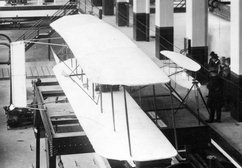
The 1903 Wright Flyer on display at the Massachusetts Institute
of Technology (MIT) in 1916.
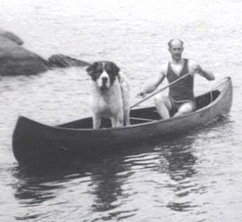
Orville with his dog Scipio at Lambert Island in
Georgian Bay, Lake Huron, Ontario, Canada.
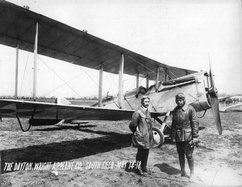
Although the De Havilland DH4 produced by the Dayton Wright
Aeroplane Company was a British design, it was powered by the
Liberty engine designed in Dayton, Ohio.
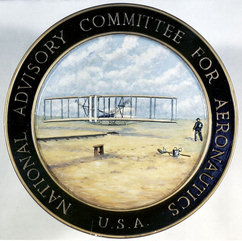
The NACA seal shows the Wright Brothers first flight in 1903.
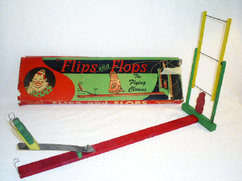
The Miami Wood Specialty Company produced Orville's design for the
"Flips and Flops" toy for several years.
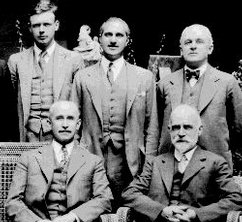
Orville (lower left) with several members of the Guggenheim Fund
board, including Charles Lindbergh (top left).
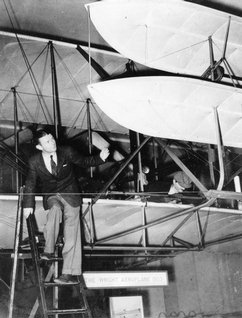
"Wrong Way" Corrigan, an American pilot who flew across
the Atlantic Ocean not long after Lindbergh, inspects the 1903 Wright Flyer hanging in the
Kensington Science Museum.
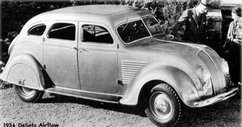
Orville assisted in the wind tunnel tests that resulted in the first
aerodynamic car design, the Desoto Airflow.
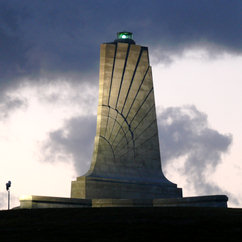
Orville Wright was one of the few Americans to have a national
memorial erected to him while he was still alive.
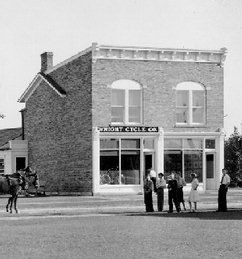
The Wright Cycle Shop, formerly of 1127 West Third Street in Dayton,
Ohio, now at Greenfield Village in Dearborn, Michigan.
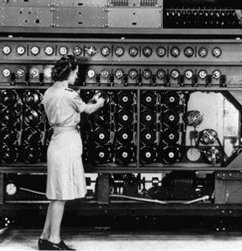
The code-busting "bombe" developed at National Cash Register in
1943.
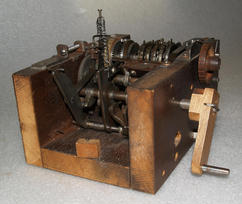
The prototype code machine that Orville Wright developed during
World War II looked to be a simple affair, but it could generate
over 11 million codes. Had it been put into use, these codes would
likely have been indecipherable to the NCR bombe and other primitive
computers of the day.
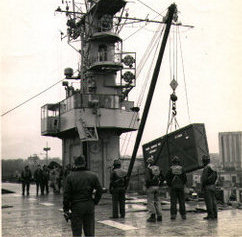
The 1903 Flyer being unloaded from the USS Palau after its trip
across the Atlantic in 1948.
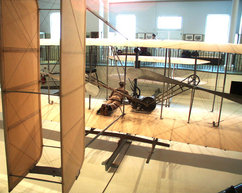
The restored 1905 Wright Flyer III at Carillon Park in Dayton, Ohio.
|

